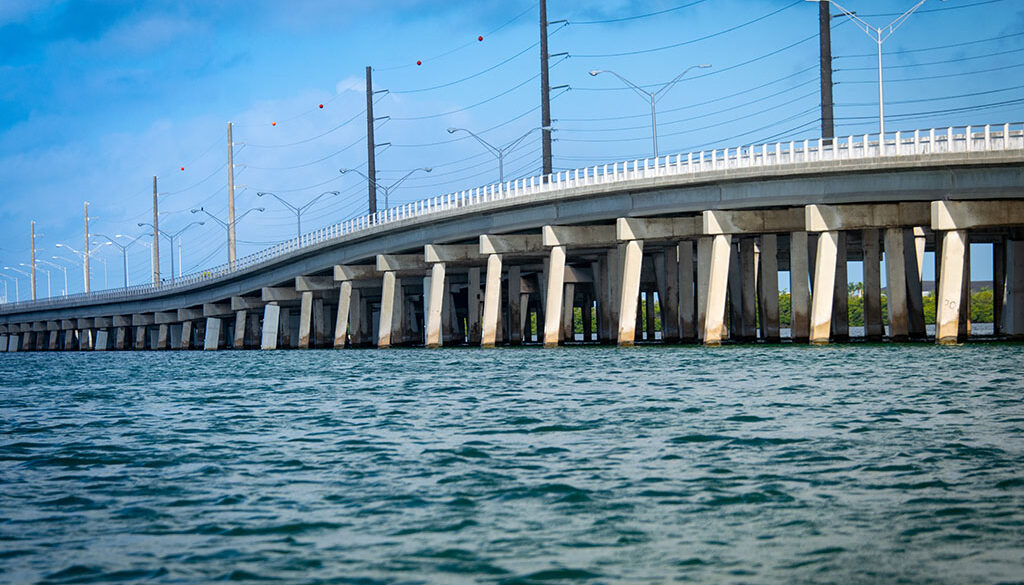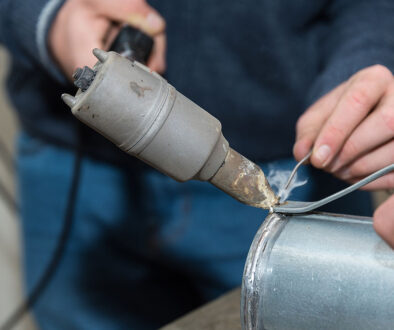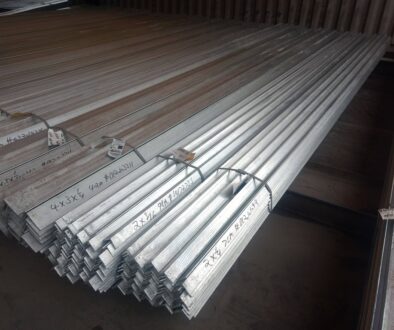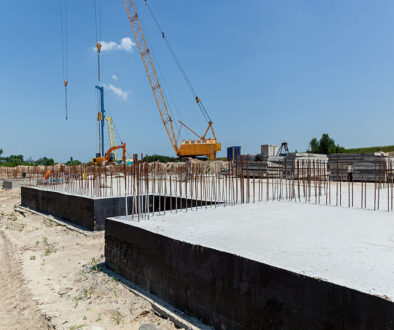Using Hot Dip Galvanizing Materials to Build Things that Last
Some within the industrial and commercial construction industries are starting to receive funds granted through the Bipartisan Infrastructure Law. Among other things, the goal of this legislation is to improve the means of transportation across the country. This will happen through building better roads and bridges, improving airports and railways, and prioritizing resilience in new infrastructure projects.
Creating a resilient infrastructure means using hot dip galvanized materials that are able to withstand damage and maintain their original integrity. Using strong and durable materials protects the original investment in the structure. It also spares the environment and surrounding population from the harmful effects of corrosion and frequent repairs.
In this blog post, we’ll take a look at why hot dip galvanized materials are the best materials for creating resilient infrastructures. Through a special method of applying a protective zinc coating to steel, a new type of material is created. This material is stronger than any other and best suited to withstand the elements.
Here’s how that process works, how the resulting hot-dip galvanized materials perform over time, and how much it actually costs to use these materials in your project.
The Process of Creating Hot Dip Galvanized Materials
Hot dip galvanizing, or HDG, is a process that creates a protective zinc coating around fabricated steel. First, the steel is rinsed and prepared to help the coating better adhere to the material. Then the steel is dipped into hot, liquefied zinc. Once it has been submerged, it is removed and set out to cool. The zinc then hardens into a solid, protective coating. This coating is neither temperature sensitive nor easily damaged, resulting in the superior construction material.
Is Hot-Dip Galvanized the Same as Galvanized?
Not all hot dip galvanized materials are the same! All have a protective coating that contains zinc. But, hot dip galvanizing produces a thicker coating with better coverage. This is why HDG materials are the most corrosion-resistant on the market. This makes them the best choice for infrastructure projects, where rust-resistance is the most important.
We reviewed the various types of galvanizing and the primary differences in this blog post if you want to learn more.
Hot Dip Galvanized Materials’ Performance: How it Holds Up Over Time
Hot dip galvanized materials continue to perform well even when exposed to the elements. Their resistance to corrosion and rust allows them to remain a high-performing material for decades. While other materials wear down over time and need costly maintenance, HDG can maintain like-new conditions for many years without maintenance.
This unique durability is due to the self-healing properties of the zinc coating. When the zinc coating comes into contact with water, it reacts by building up extra protection. This effect stops corrosion before it has a chance to start.
A Couple Examples of Hot Dip Galvanized Materials in Action
Two bridges in opposite parts of the country use hot dip galvanized materials to span difficult areas. They are great examples of HDG’s resiliency.
Stearns Bayou Bridge Exceeds Expectations
The Stearns Bayou Bridge in Ottawa County, Michigan was the first hot-dip galvanized bridge constructed in the United States. The bridge spans Lake Michigan, which freezes every winter. It spends months covered in salt to combat the below-freezing temperatures. As a high-traffic point for truck transportation, it is important for the bridge to remain open year-round and not experience frequent closures.
When engineer Frank Brechting, Jr. designed the bridge using hot-dip galvanized materials, he was way ahead of his time. In the 1960s, galvanized materials were still considered experimental for projects like this. Brechting wanted to create a bridge that would save the surrounding areas money by minimizing the need for constant maintenance. And so, he chose the material that was known to withstand the harshest environments.
As of 2017, the hot dip galvanized materials throughout the bridge are still in peak condition. In-depth investigations have found that the coatings are still thick and corrosion-free. While other portions of the bridge have been repaired, none of the galvanized materials have needed work. Many still boast a nice, like-new gray appearance. The only areas that show signs of wear are the guardrails. These have some aesthetic staining, attributed to the frequent use of salt on the road, but still show no signs of red rusting.
This bridge was such a success, Ottawa County has since used hot dip galvanized materials for more infrastructure projects. They all continue to defy expectations.
Across the Country, the Boca Chica Bridge Withstands the Elements
Hot dip galvanizing proved to be the best choice to withstand different but equally challenging elements in the south as well. The Boca Chica Bridge connects the Florida mainland to Key West. It plays an essential role in enabling traffic to keep moving south along US 1. Sitting only a few feet above seawater, the bridge is constantly soaked and often hit by large waves.
In its case study featuring the bridge, the International Zinc Association states, “While other key bridges on US 1 have been removed and replaced due to severe corrosion, this structure has been in place since 1972.”
To date, the bridge shows no signs of corrosion and continues to be used daily.
Is Hot Dip Galvanizing Expensive?
With all its benefits, you may think hot dip galvanizing is an expensive option. The initial cost of hot dip galvanized materials can be higher than other options. But, there are many advantages that offset that cost from the start.
The tough materials can be transported easily and in any weather. This reduces the cost of moving it and removes the expense of delaying projects due to bad conditions. HDG’s ability to self-heal also minimizes the need to over-purchase materials to account for damaged ones.
There’s another way hot dip galvanized materials make a big impact in infrastructure projects. We’re referring to the materials’ ability to form a strong, chemical bond with concrete. The zinc coating outside the material fuses and forms a beneficial connection with the concrete surrounding it. This not only strengthens the true hot dip galvanized rebar itself, but also the concrete. This special power means that galvanized rebar rods do not need to overlap to form a strong structural frame. This is a huge cost-savings for a project that would otherwise need enough material to overlap.
And when it comes to long-term savings, hot dip galvanized materials are the best. Their resiliency reduces or eliminates maintenance and repair costs after a project’s completion. The first hot dip galvanized bridge put this to the test and proved it! Hot-dip galvanizing is a cost-effective choice that offers long-term value for infrastructures of any size or type.
Hot Dip Galvanized Materials On Time and On Budget for You!
If you are considering true hot dip galvanized rebar or other hot dip galvanized materials for your project, contact our team at South Atlantic to get started. We hot-dip galvanize our own materials to keep a full stock of the highest quality products on hand for our customers.
All it takes is one call and we’ll ship our pre-galvanized steel anywhere coast-to-coast.
And because we manage the entire process from start to finish, you can be sure that your materials will stay on budget and arrive on time. Request a quote for your upcoming design project today: www.southatlanticllc.com/galvanized-steel/contact/request-a-quote.





